In the heart of Andalucia, you will find a charming small city with a wealth of history. Once you set foot there you’ll probably ask yourself why this place doesn’t get more attention. You’re in Lucena, Cordoba.
Mainly famed for its outlets and furniture factories, there are surprisingly many amazing things to do in Lucena – which mainly receives Spanish tourism.
Also known as the city of three cultures, Lucena boasts a mishmash of historical sites from a Moorish fortress, a Roman pottery factory, and a Jewish Necropolis.
Truth is, Lucena was solely inhabited by Jews between the 9th and the 12th century. Still, the only physical remains that have been found, is a Jewish cemetery that was revealed as late as 2006 right outside the ancient city walls.
Lucena also houses a number of splendid churches and palaces that are worth visiting and everywhere you go, you will find imposing baroque façades which reminded us a bit of Osuna in Seville.
After spending a few days in Lucena, we fell more and more in love with the relaxing ambiance, the Spanish spirit, and the fact that we were the only foreign tourists we encountered.
We did go slightly off-season, if you can plan your visit to spring, you can also visit the sumptuous patios that the Cordoba province is so famous for.
Nonetheless, I dare say that Lucena deserves a mention among the prettiest cities in Andalucia. If this sounds like an Andalucia off the beaten path experience for you, read on to uncover the best things to do in Lucena, Spain.
At the bottom of the post, I’ve also included some travel tips so you can start planning your trip!
Disclosure: This post may contain affiliate links. That means that if you make a purchase through one of those links, I will get a small commission at no extra cost to you.
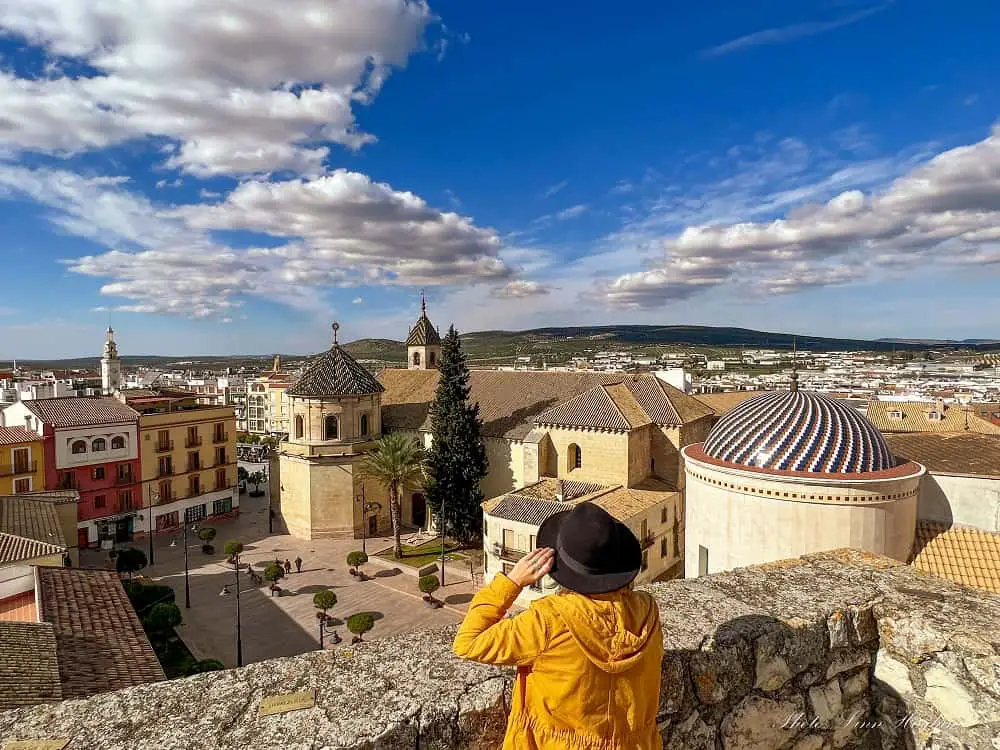
OTHER COOL PLACES TO VISIT NEARBY
🙋JOIN OUR THRIVING FACEBOOK COMMUNITY FOR ANDALUCIA TRAVEL TIPS AND INSPIRATION!
Table of Contents
Best things to do in Lucena
Casa de Los Mora
Casa de Los Mora is one of the top attractions in Lucena and one of the many palaces you can visit for free.
It was founded in 1575, adjacent to the Iglesia de San Pedro Mártir Church. Later, it was used as a distillery and factory for anis, olive oil, and wine.
Today, there’s a museum inside where you can see different machines and other items used in the production which is quite interesting.
The central courtyard is also beautiful with a fountain and large palm trees.
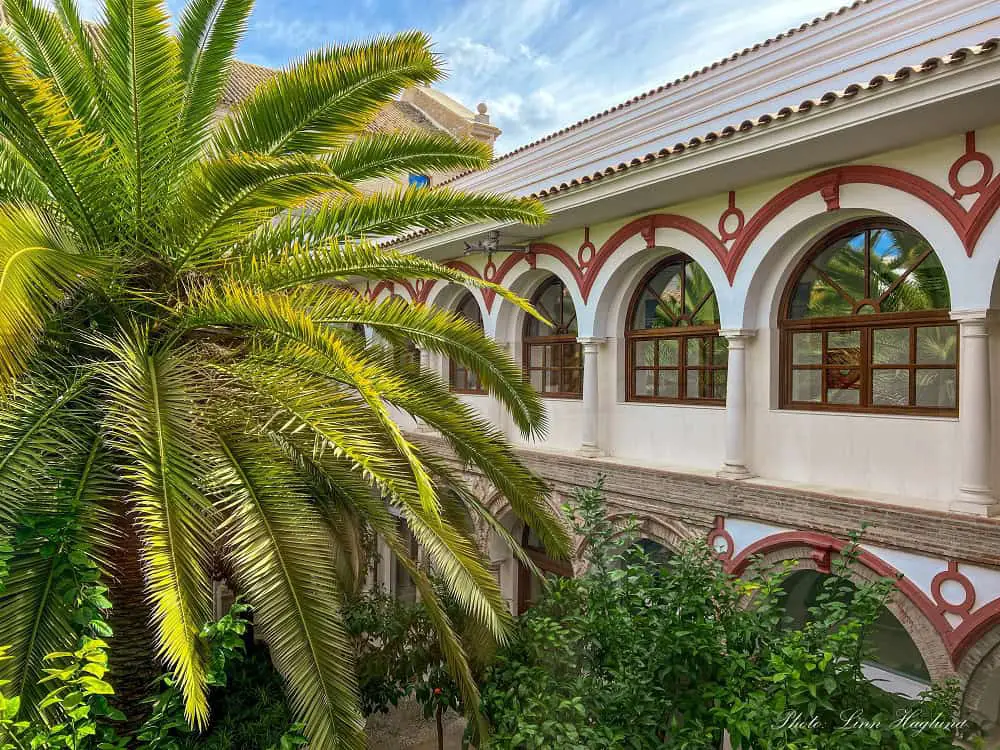
Visit Iglesia de San Pedro Mártir
On the street corner, next to Casa de Los Moras, you find the Church of San Pedro Mártir de Verona. It used to be part of the convent and was restored after only having the outer walls left.
Even though I was in Lucena for over a week, I somewhat never managed to find the doors open, so I’m not sure how it’s inside.
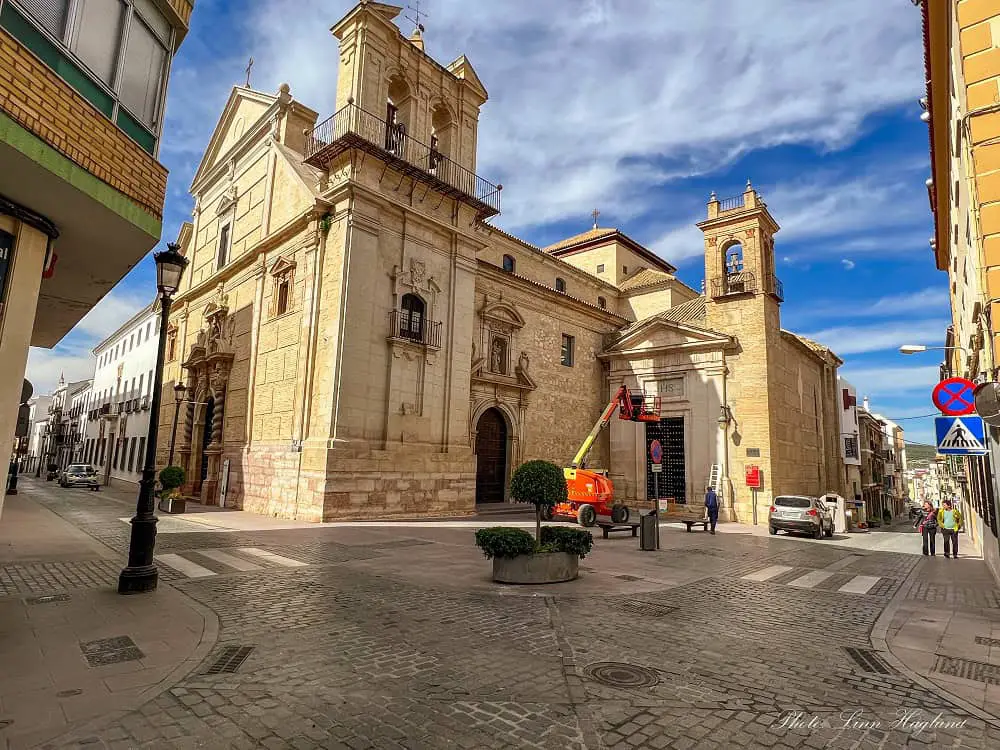
Hunt for street art
Lucena is home to a large number of great pieces of street art and one of my favorite things to do in Lucena is to stroll around the streets looking for street art.
If you have the time, allow yourself a couple of hours getting lost in the streets searching for street art as there are some unique pieces hidden around.
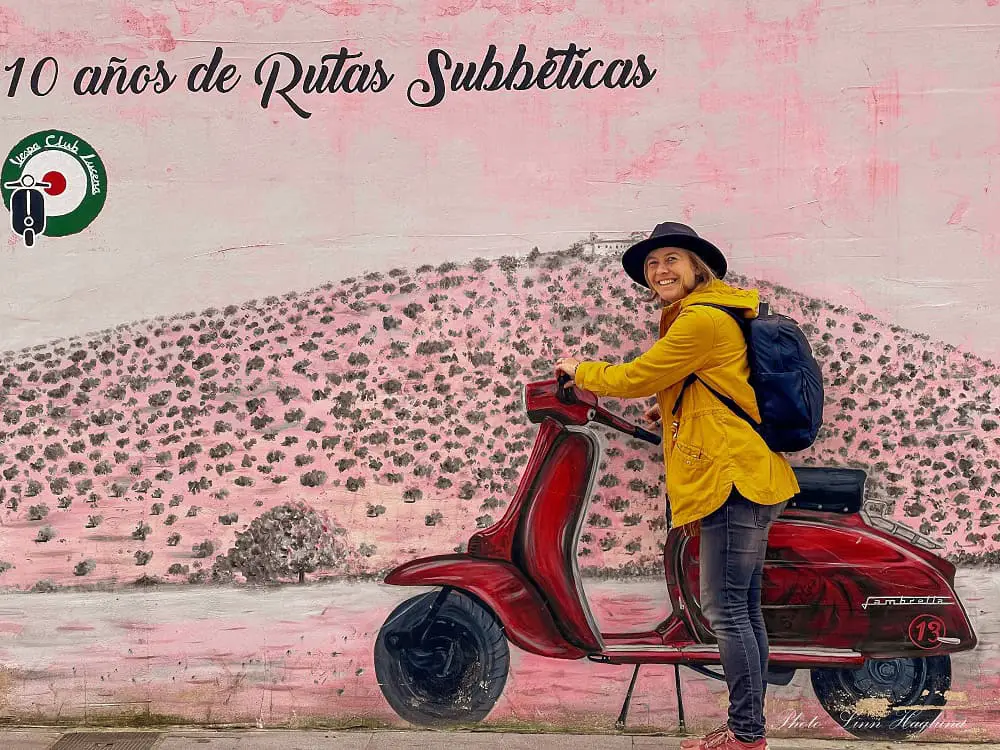

Palacio de Los Condes de Santa Ana
Palacio de Los Condes de Santa Ana is considered one of the finest examples of 18th-century civil architecture in Lucena. And in my opinion, the most beautiful palace in the city. It’s quite incredible that it’s completely free to visit.
At the entrance of the palace, you find the tourist information office and besides different art exhibitions, you also find the Lucena Interpretation Center.
There are two different courtyards, one with beautiful porticoes and make sure you take note of the impressive staircase.
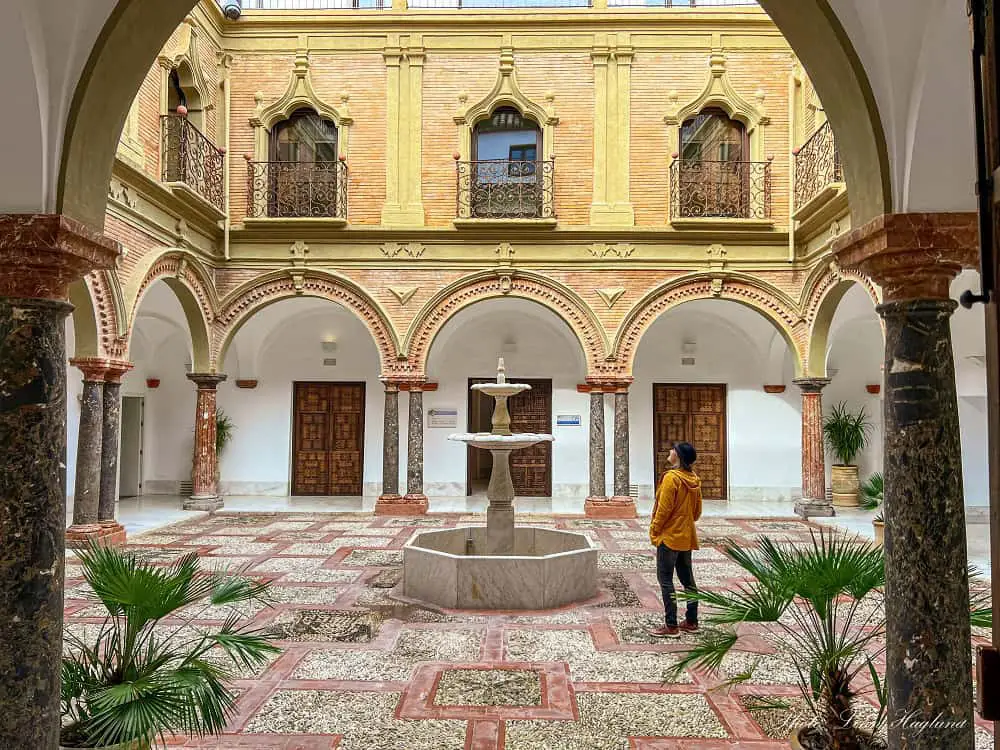
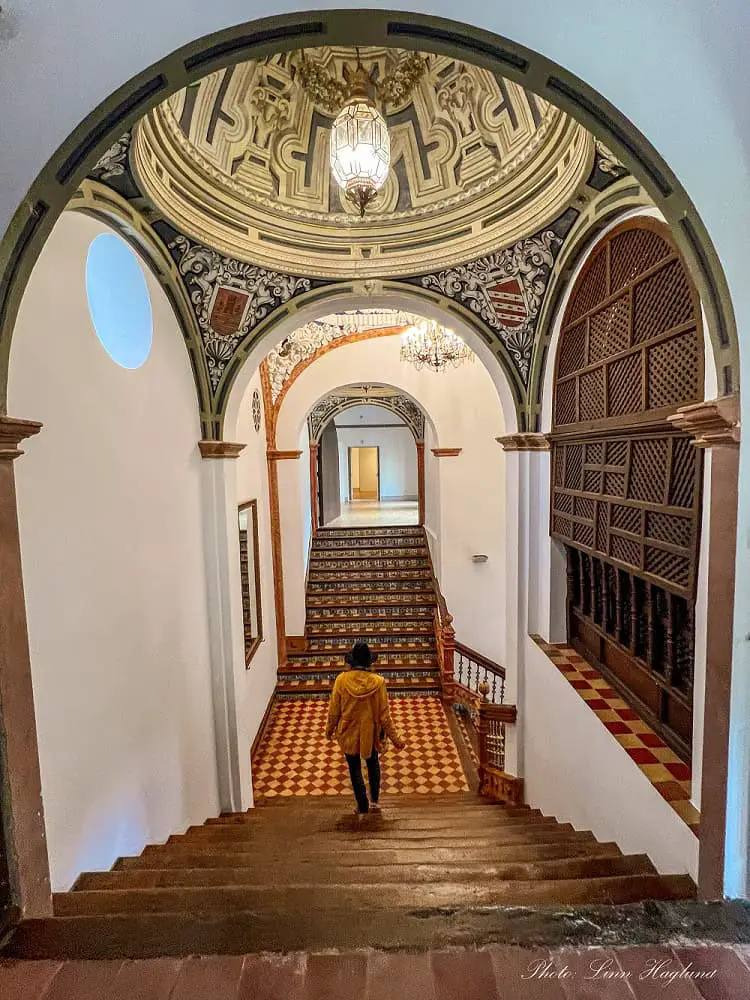
Stroll along El Coso
El Coso is a short but pretty pedestrian street going through a park area right behind the castle. It’s a great place for a stroll but it’s also a nice place to sit down with a drink to people watch.
There’s also a playground in the park which is great if you travel with kids.
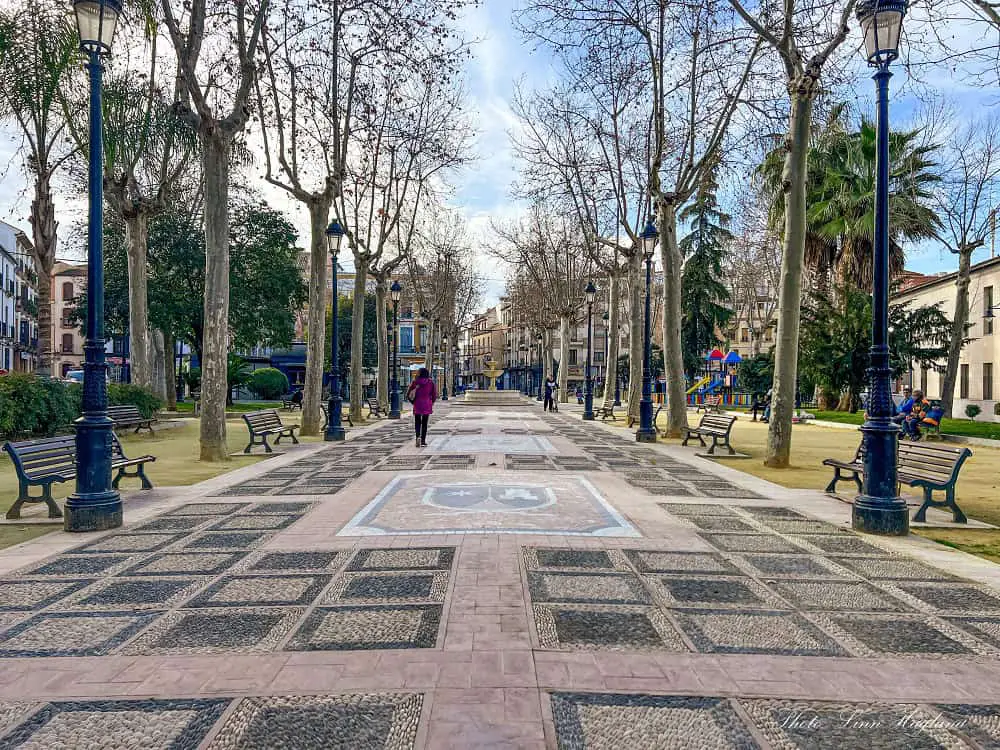
Visit Castillo del Moral and Archaeological-Ethnological Museum of Lucena
Lucena’s medieval castle sits in the heart of the city and is a must-visit. You can climb the castle walls and towers where you can admire the most iconic views of Lucena.
Inside, there’s also the Archaeological-Ethnological Museum which is interesting to have a look through on your way up to the castle walls.
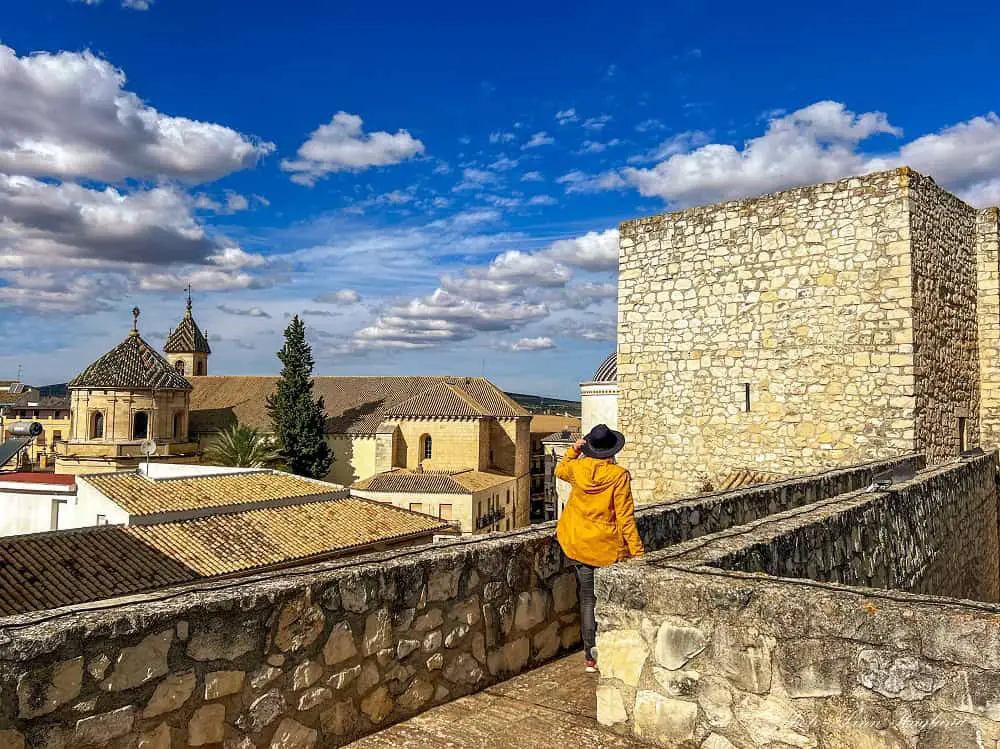
Grab a bite at Mercado Municipal de Abastos
Right outside the castle, you find the municipal market of Lucena where you find fresh produce, fruit, vegetables, and restaurants and bars to grab a bite to eat.
If it’s nice weather, you can go for a stroll inside to see the market and sit down at one of the tables outside to enjoy the sunshine.
Have a drink at Plaza San Miguel
Plaza de San Miguel is the square next to the castle where the Central Market is located. It’s a fantastic place for a drink.
I love how Lucena has a relaxed and local vibe and this square truly transmits it with local prices and drinks. It’s a great place to watch the castle from.
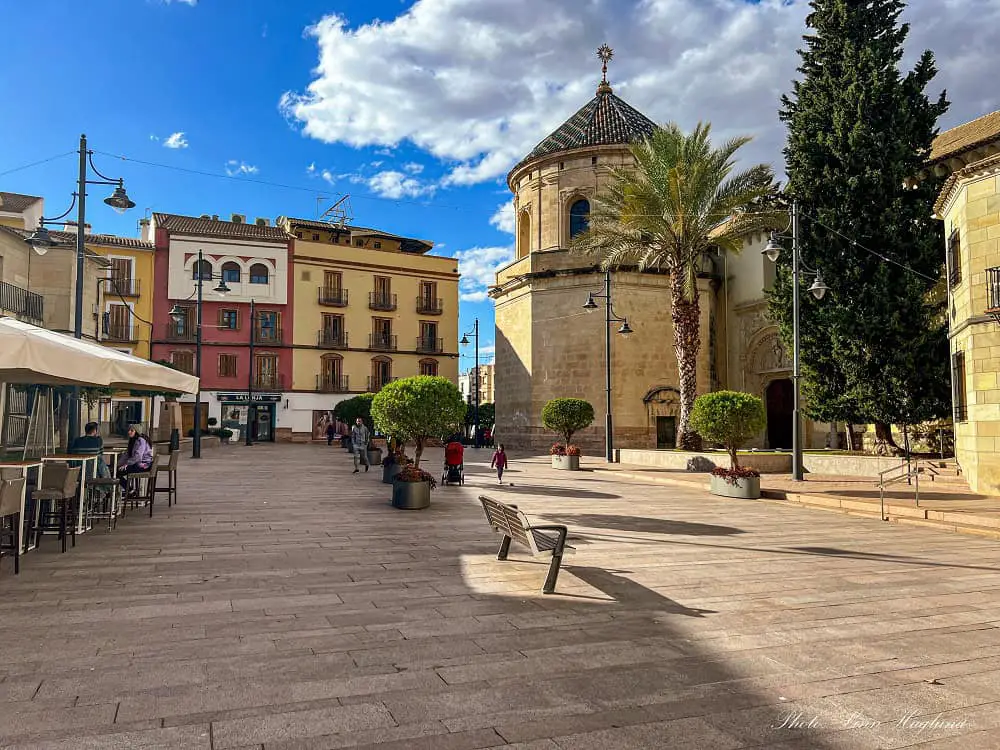
Step inside Paroquia de San Mateo
Parroquia San Mateo is one of the prettiest churches in Andalucia, at least in my humble opinion. Especially the chapel to the right as soon as you enter.
With colorful and vivid details, it’s a unique and stunning chapel that left me completely spellbound. It resembles the Real Santuario de María Santísima de Araceli, just a lot nicer.

Stroll across Plaza Nueva
Plaza Nueva is one of the main squares in Lucena and livens up on the weekends when families go for strolls and people crowd the bars and restaurants that set their tables out in the sun on the square.
On one end, you see the staggering beauty of Paroquia de San Mateo while the Town Hall stands elegantly on the opposite side – resembling a Moroccan mosque with its monumental clock tower looming above the square building.
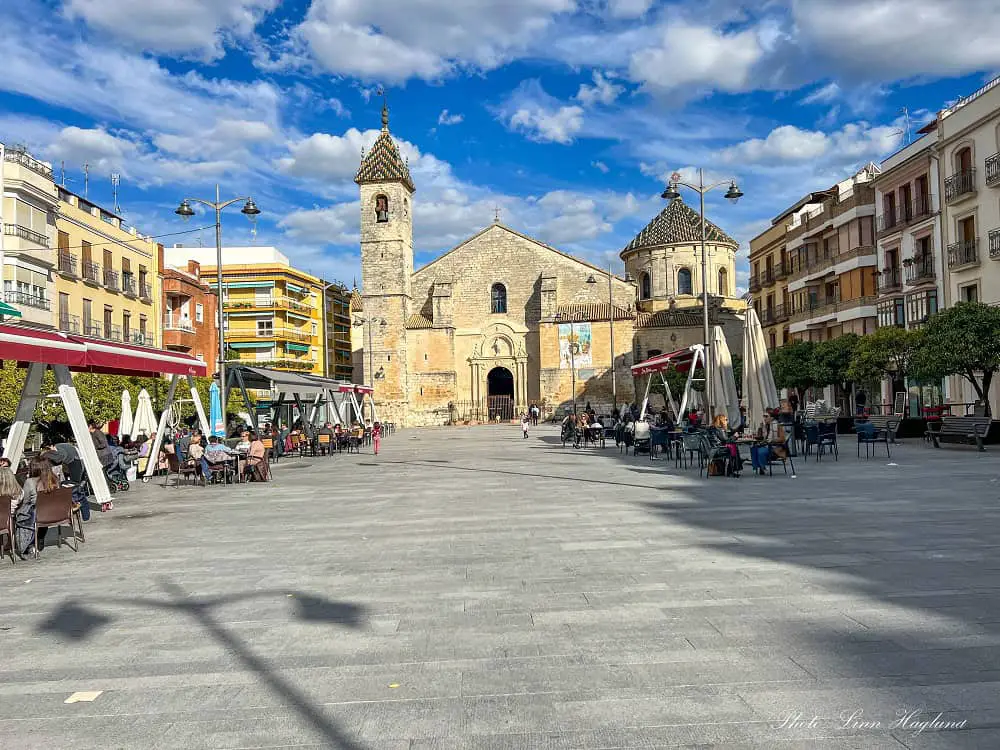
Visit Parroquia Nuestra Señora del Carmen
On top of a hill on the outskirts of the historical center, you find the humble 17th-century Parroquia Nuestra Señora del Carmen.
Inside, the altarpiece is adorned in gold with statues of Jesus and Madonna. My favorite feature, however, is the painted dome above the altarpiece.
I love how it’s simple, yet intricate throughout. I think it’s definitely worth a visit if you have more than one day in Lucena.

Iglesia Hospital de San Juan de Dios
Iglesia Hospital de San Juan de Dios dates back to 1565 and was once part of a hospital. The building itself is plain, but the entrance is absolutely mesmerizing with large marble columns and statues.
It’ sits ‘s located on the outskirts of the old town not too far from Parroquia Nuestra Señora del Carmen.
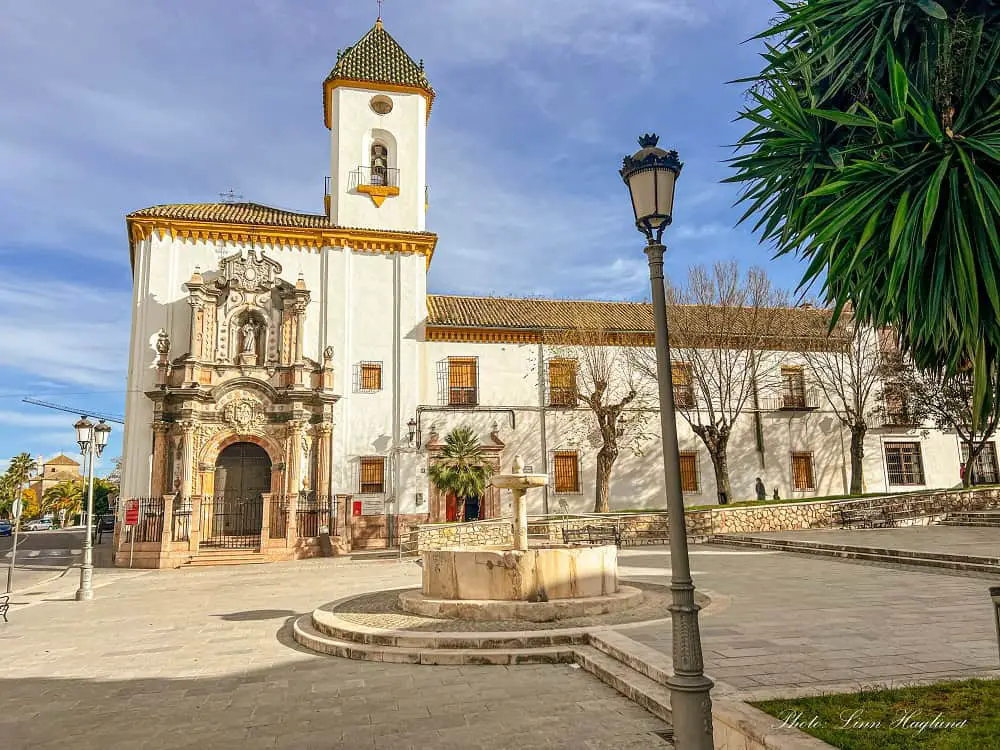
Walk around the parks of Lucena
I always love a city with green spaces and Lucena is great for that! The city is home to several parks where you can seek the shade of trees and enjoy the trickling sound of water in the fountains.
There are several gardens and parks around the city as long as you walk a little outside the historical center. So if you need a break from sightseeing, there are plenty of options to sit down on a bench to people watch or stroll among the trees.
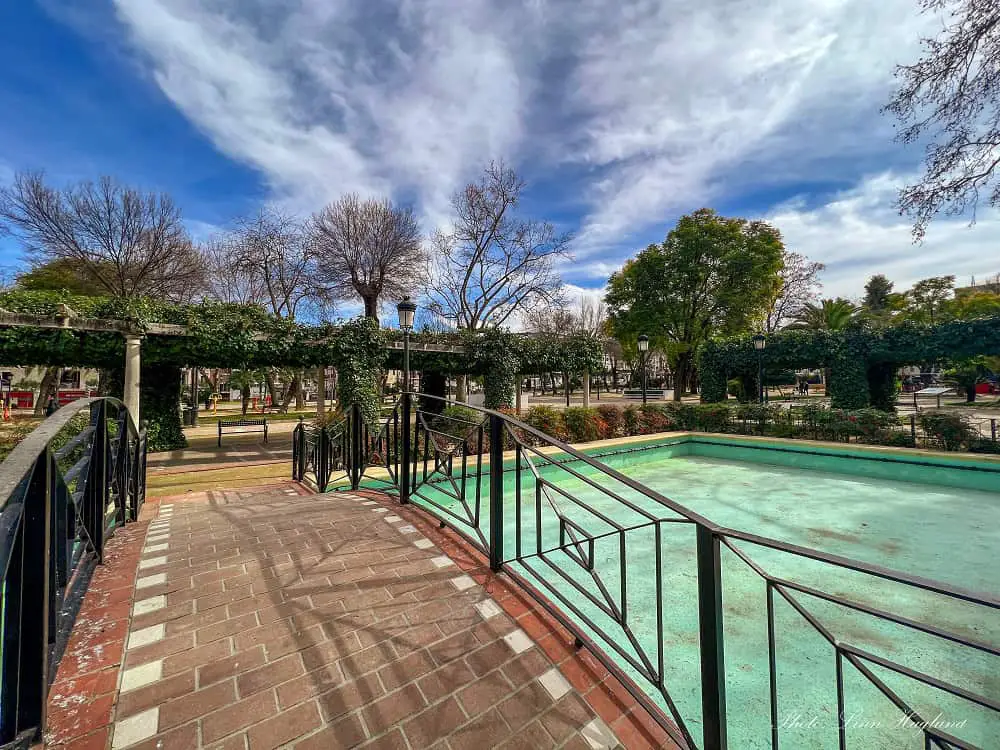
Visit the Jewish Necropolis
The Jewish Necropolis was the first, and so far the only, physical remnants of the 4 centuries the Jews lived in Lucena. A guided tour of the necropolis will give you an interesting insight into how the Jews’ burial traditions were as well as the history of the finds.
At first, it was believed that they found corpses from the civil war, but when archaeologists found that they turned out to be remains from the Jewish era, Lucena saw an opportunity to apply for the Jewish association. They finally got accepted after years and years of being rejected due to the lack of physical evidence of the Jews living in Lucena.
To visit the Necropolis, you must book a guided visit upfront. This can be done in the castle. The archaeological site is only open on weekends, but for an extra fee they might call in a guide mid-week upon request.
I recommend getting a joint ticket that include the Necropolis, the Alfar, and the Castillo del Moral which is 7 Euros.
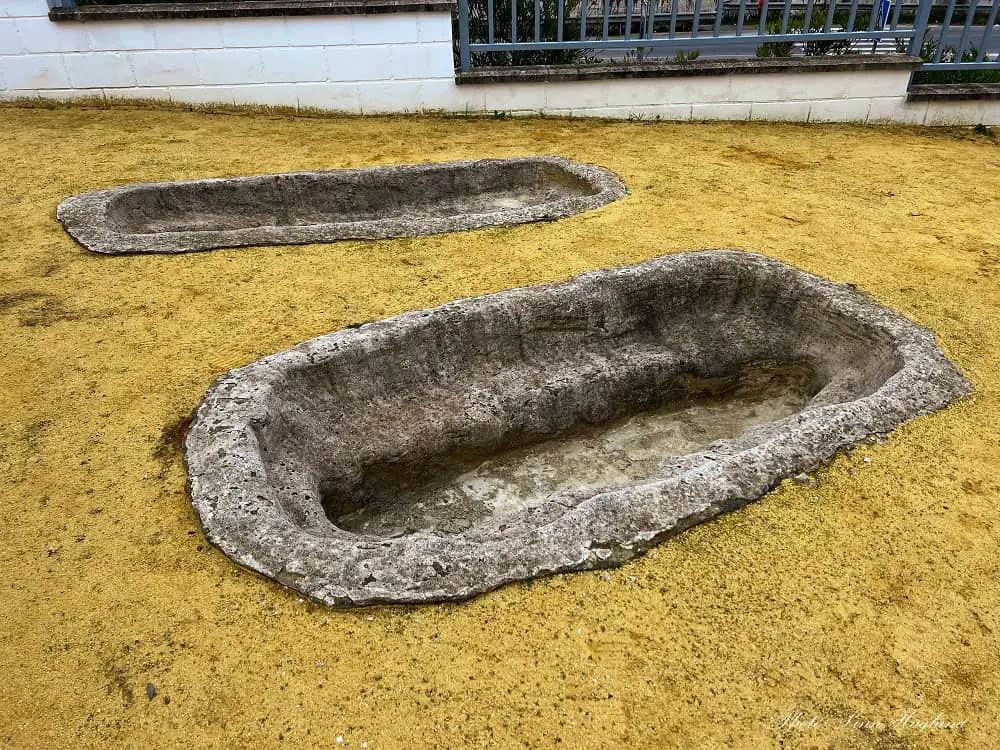
Visit the Alfar Romano
The Roman pottery factory, Alfar Romano, was first discovered in 1996 and wasn’t opened to the public before the summer of 2022, but made an exquisite addition to Lucena’s attractions.
Due to Lucena being close enough to bigger cities to transport the pottery, yet far enough from other settlements so the smoke wouldn’t bother people, Lucena turned out to be the perfect place for what is one of the 3 biggest Roman pottery factories in Spain.
Right next to it, there was a small river and first-class clay. The factory was mainly in use in the 1st and 2nd centuries and a guided visit to the newly opened archaeological site gives you an incredible insight into the history of the place.
Besides a museum with information and artifacts found on site, you will witness some of the original pottery ovens that have been excavated and watch a 3D movie about the history.
Tickets must be pre-booked and it’s mainly open on the weekends. I recommend going to the castle and booking your joint ticket with the castle and Jewish Necropolis there for 7 Euros for all 3 sites. They do tours in English upon request.
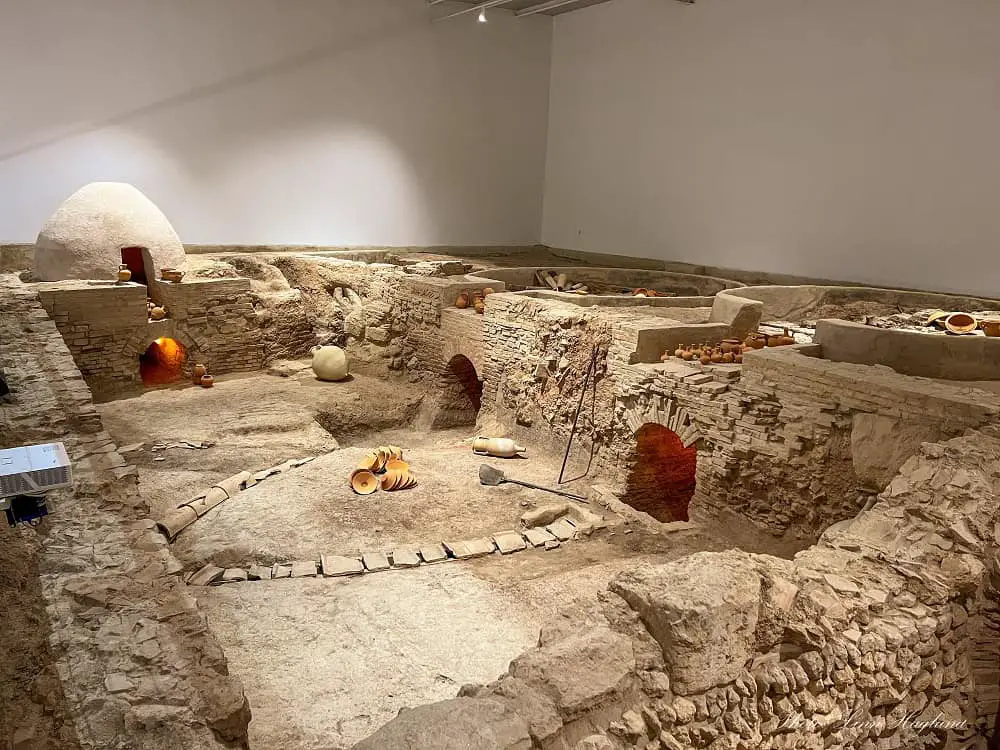
Visit the Real Santuario de María Santísima de Araceli
The Real Santuario de María Santísima de Araceli is a beautiful sanctuary set on a hilltop overlooking Lucena city and the surrounding countryside.
From there, you can see 5 of Andalucia’s provinces, Cordoba, Seville, Cadiz, Malaga, and Granada.
It’s also a popular paragliding spot and I loved to see all the paragliders in the sky with the beautiful views as a backdrop.
Inside, the sanctuary is really stunning with intricate details adorning the main altarpiece and there is a beautiful statue of the saint. The sanctuary was built in the 17th century.
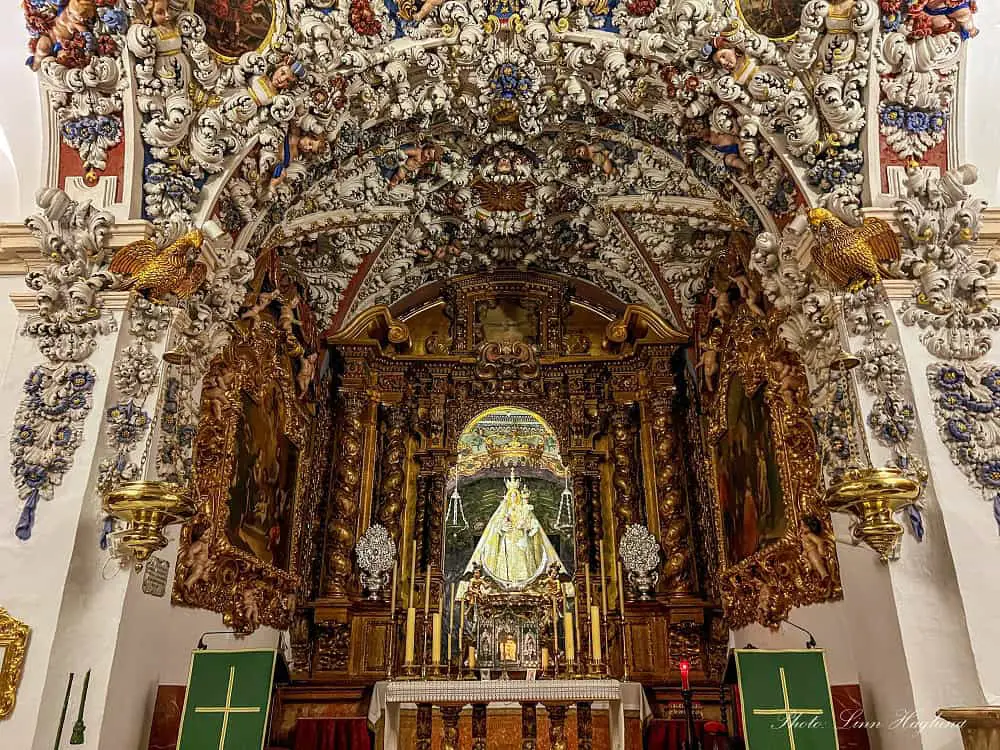
CHECK OUT OUR VIDEO FROM OUR VISIT IN LUCENA
How to get to Lucena
Getting to Lucena is easy from the big cities like Cordoba and Malaga both by car and public transport. I’ll go through what you need to know here.
Getting to Lucena by car
Driving to Lucena is easy and there’s plenty of free parking outside the center at only 10-15 minutes walking distance from the historical center.
We found parking every day for over a week outside the Feria ground. Obviously, it won’t be easy to park there during the feria of Lucena (which is in September) or other festivities held there.
Driving time from major cities in Andalucia:
- Cordoba to Lucena: 50 minutes
- Malaga to Lucena: 1 hour
- Granada to Lucena: 1 hour 30 minutes
- Seville to Lucena: 1 hour 45 minutes
Getting to Lucena by public transport
There are daily buses from Cordoba to Lucena that take about 1 hour to an hour and a half. The buses are run by Autocares Carrera and you can check the time tables here.
On weekdays, the first buses leave at 8:30 and on weekends at 10:30 which makes it possible to go on a day trip from Cordoba to Lucena.
Best time to visit Lucena
Lucena gets very hot in summer, as do all of the Cordoba province, so I’d avoid the months of July and August, and even the first half of September can be scorching hot.
From mid-September to mid-June, it’s perfect to go. The shoulder seasons usually offer mild temperatures but the winter can get quite cold compared to other Andalusian destinations.
Where to stay in Lucena
There are plenty of fantastic places to stay in Lucena. But if you’re looking for something unique, make sure you check in at Hotel Santo Domingo Lucena.
The hotel is set in an 18th-century convent and boasts a spectacular courtyard with a restaurant where they serve traditional food.

Reflections on visiting Lucena, Cordoba
Summing up, visiting Lucena was nothing but amazing. We loved every bit of it, the architecture, the churches, the historical sites, and the laid-back ambiance.
The city has a real local feel to it which we generally love and all the tourists we came across were Spanish. Do we think this city deserves more visitors? Definitely yes!
I really hope you enjoy Lucena as much as we did. Happy travels!
